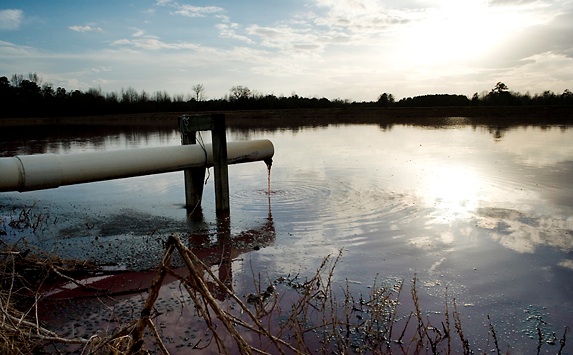Wendy’s Baconator®, a half pound beef burger smothered with two yellow slices of cheese and six thick slices of bacon, costs a little more than $4. Perdue’s® 12oz pack of dinosaur shaped chicken nuggets goes for $3.99. Two Tyson® chicken breasts, averaging 24oz, can be found for as little as $7. In the United States, meat is cheap and available and corporate behemoths like Tyson and Perdue dominate the meat markets. The retail price of industrialized meat stays low in part because of the prioritization of profit over all noneconomic factors, such as the environmental wellbeing and conservation. The environmental costs of the livestock sector are monumental. Industrial animal farming pollutes drinking water, contaminates soils, spreads disease, and emits massive amounts of greenhouse gases responsible for heating the earth’s atmosphere. These environmental costs and consequences are externalized by big agribusiness, while the public, nongovernmental organizations (NGOs), and government agencies are often left to finance and address all damages.
As detailed in the last blog post, the industrial livestock sector has moved towards a system that maximizes production and profitability. The pursuit of these goals prompted large-scale farms to introduce antibiotics to animal feed, pack more animals into tighter spaces, and speed up production practices. Further, government subsidies and deregulation facilitated the rise of industrial animal farms. Tufts University, for example, estimates that between 1997 and 2005 the United States’ industrial livestock sector saved over $35 billion with the aid of federal farm subsidies. Oftentimes, such farm policies, the maximization of profit, and the wellbeing of the environment come into conflict, and livestock operations continually trample the health of the natural world.
One example that illustrates agribusiness impact on the environment occurred in 1995 in Onslow County, North Carolina. On the morning of June 25, the “worst hog-spill in state history” sent 25 million gallons of soupy hog waste across roads and crops into the New River. The spill occurred amidst legislative conflict between hog farms and the North Carolina government, in which the industry resisted regulation to protect against such an incident. The farm’s waste management system lacked adequate dike for the amount feces and urine produced by their 10,000 hogs. The damage was immeasurable as it harmed everything from the fishing industry to the wildlife in the river to the residents of county. Dangerous microbes and nitrate pollution contaminated water supplies; fish suffocated from a lack of oxygen and the ingestion of toxic microorganisms; and nitrous oxide was continually emitted from the feces and urine clogging the state’s waterways. The New River became a bubbling, toxic cesspool emitting massive greenhouse gases.
The incident above is indicative of the meat industry’s apathy towards the environment. Nationally, the industrial livestock sector is poisoning the waterways and soils as it continually contributes to the heating of the atmosphere. As seen in the 1995 hog waste spill in Onslow County, manure and urine funneled into massive lagoons are prone to leakage, breakage, and overflow. Further, the breakdown of nitrogen in livestock manure and urine contributes to roughly five percent of all nitrous oxide emissions in the United States. Manure pits are also associated with carbon dioxide and methane, two other potent greenhouse gases. While more than 500 million tons of manure is produced annually, a number three times greater than the amount human sanitary waste produced per year, the inability to recycle it of naturally back onto the land creates a host of social, health, and environmental problems.
Cheap meat is an illusion. With an estimated 9 billion boiler chickens, 113 million pigs, 33 million cows, and 15 million turkeys raised and slaughtered for consumption each year, industrial animal factories give rise to massive environmental burdens. The use of synthetic fertilizers to grow billions of tons of animal feed has contaminated soils and waterways. The expansion of meat production has pioneered deforestation over the last 20 years, destroying valuable carbon sinks and contributing to biodiversity loss. The air around the farms is plagued with pungent odors. And, the livestock sector fills the atmosphere with 18 percent of all greenhouse gases, perhaps most distressing. These issues are only a few of the meat industry’s externalities. While most of them can be alleviated, they are not as mitigation and clean up costs are expensive. The industrial livestock sector demonstrates a complete lack of accountability on the environmental front.
Consumers sustain the meat industry’s practices through mass purchase of cheap processed meat. Shoppers typically consider price over other factors. Although information about the environmental and humanitarian damages of the meat industry is readily available in major publications, the cheapness of industrial meat prevents large-scale public disapproval. Advertising campaigns also sway public opinion and equate meat consumption with being American. What results is a disconnect between the consumers and their food.
According to Anna Lappé, “Every time you spend money, you are casting a vote for the kind of world you want.” As consumers continue to readily purchase cheap meat and turn a blind eye to the environmental impact of their favorite products, industry is free to pollute the environment and emit greenhouse gases at alarming rate. In order to limit the catastrophic potential of climate change and conserve the environment, the meat industry must change its profit centric behavior. However, any changes in behavior are likely to come from public pressure. Moving forward there needs be conscious effort on both parts of the consumer and the producer to purchase and raise sustainable meat. Unlike cheap processed meat, sustainably raised meat entails environmental stewardship, in which the protection of natural resources and welfare of animals are important as profit. Policy changes and increases in regulation have the potential to transform the environmental burden of the meat industry as well as the excessive demand for meat from consumers. Next week this blog will examine current policies and the lack of regulation that contribute to the meat industry’s taxing environmental practices.
